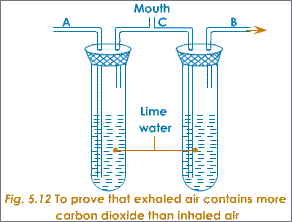Deindustrialisation: South Wales
South Wales has experienced both growth and decline as an industrial area.
During the 19th Century Southern Wales became a vitally important industrial area, for both iron and steel production. The steep valleys, with their fast flowing rivers, provided power and transport. The hills were rich with raw materials, such as coal, iron ore and limestone, and the area was close to the ports of Cardiff and Swansea.
In 1860 there were over 30 iron works in the valleys of South Wales. They provided vital employment for the local villages, which became almost solely dependent on the new industries.
During the next 40 years improvements in the smelting process, meant that the production of iron was replaced by steel manufacture, which was more profitable.The natural resources needed were the same.
By the 1990’s only two steelworks were left in South Wales, and both of them were on the coast. The resources had run out, only one coal-mine remained working and the many small works in the valleys had closed down, causing huge social problems.
The new works were integrated steel works, which imported their raw materials from abroad. These aimed to make the industry more efficient and competitive in a growing world market. Not only is there competition form other countries but also form other materials that are increasingly being used instead of steel. Materials, such as aluminium and plastics.
An example of one is the integrated steel works at Port Talbot. Opened in 1954, it is an integrated steelworks, which is one in which all processes of the steel making industry occur under one roof.
The coal and iron ore deposits of South Wales have long since run out or become too costly to get at, so both of these raw materials are imported from places such as Africa and South America.
Port Talbot has many locational advantages. There is a large area of flat land, near to the sea for importing and exporting purposes. Near by is a large workforce and access to the entire British market through the excellent motorway links. It has created employment opportunities in the area, and has encouraged further investment and growth.
South Wales is experiencing something of a recovery again, thanks to being at one end of the M4 Corridor. Industrial Parks have been established outside of the main cities, to benefit from the large workforce,good transport links and available land.
There have also been government grants and loans made available to encourage industrial location in the area. Companies such as Sony, Bosch and Toyota have all re-located to South Wales.
Hi-tech industry: The M4 Corridor
New industrial regions in Britain have tended to grow up along main communication routes. The best example of this is the “Sunrise Strip”, which takes in the area around motorways such as the M11, M23, M3 and, most importantly, the M4.
These industries are described as being footloose. They have generally grown up over the last 25 years in “growth areas”, along communications routes. Although they do bring prosperity to regions, the new industries actually employ few people in comparison to the older, declining, heavy industries. Traditional location factors have been super-seeded by newer ones.
As access to raw materials is relatively unimportant nowadays, location, although dominated by communications considerations, also can increasingly take into account the social needs of its employees. Thus climatic, scenic, health and entertainment factors have to be included. In turn the industries try to locate near to places where a skilled workforce could be employed, such as around the university towns of Oxford or Cambridge.
The Sunrise Strip has many locational advantages:
- The motorway system, which allows easy access to all parts of the United Kingdom.
- Easy access, via the roads, to the Channel Tunnel and ports to allow export abroad.
- The close proximity of Heathrow, Gatwick, Stanstead and Luton airports, all of which could be used to export products.
- The skilled workforce found in university towns of Oxford, Cambridge, Reading and Bristol.
- Close proximity and good access to London, where the major government functions and financial trading occurs.
- The concentration of other industries means that ideas and knowledge could be shared, there will be a concentration of suitable skilled labour and transport costs may be reduced between agglomerated industries.
- A very attractive natural environment, which would provide a very pleasant place to live for the workers. Areas such as the Cotswolds and the Mendip Hills are in easy reach of the Sunrise Strip.
Two other good examples of similar new industrial areas are:
1. Silicon Glen in Central Scotland.
2. Silicon Valley in California, USA.

